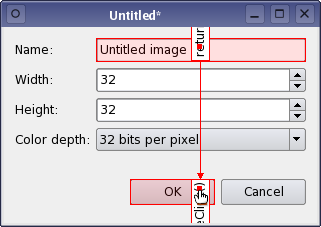Slot In Qt
- Looking through the Qt source it seems that when a slot is called from QMetaObject::invokeMethod the return type can be specified and the return value obtained. (Have a look at invokeMethod in the Qt help) I could not find many examples of this actually being used in the Qt source. One I found was. Bool QAbstractItemDelegate::helpEvent.
- Signals and slots are used for communication between objects. The signals and slots mechanism is a central feature of Qt. In GUI programming, when we change one widget, we often want another widget to be notified. More generally, we want objects of any kind to be able to communicate with one another.
- What are Qt 5 Signals and Slots? Very basically, signals and slots in Qt allow communication between objects. In Qt, a signal is emitted when an event occurs. A slot is a function that is called when a signal is emitted. For example, a push button emits a clicked signal when clicked by a user. A slot that is attached to that signal is called.
Connecting in Qt 5. There are several ways to connect a signal in Qt 5. Qt 5 continues to support the old string-based syntax for connecting signals and slots defined in a QObject or any class that inherits from QObject (including QWidget).

Qt 5 signals and slots mechanism. How signals and slots in Qt differ from the callback architecture in other widget toolkits. A Qt basics tutorial. How to add signals and slots in Qt Creator.
Part 9 of the Qt Creator C++ Tutorial
What are Qt 5 Signals and Slots?
Very basically, signals and slots in Qt allow communication between objects.
In Qt, a signal is emitted when an event occurs. A slot is a function that is called when a signal is emitted. For example, a push button emits a clicked signal when clicked by a user. A slot that is attached to that signal is called when the clicked signal is emitted.
Multiple signals can be connected to any slot. Signals can be connected to any number of slots.
Most of the details of signals and slots are hidden in their implementation in Qt. At this stage of the tutorial series we do not look in depth at signals and slots.
Using Signals and Slots in Qt Creator
There are several ways to use signals and slots in Qt Creator projects. This includes manually adding them in code. Here we briefly look at the easier ways to use signals and slots to respond to events. Events are generated by users interacting with widgets in an application. These events cause signals to be emitted. Corresponding slots, or functions then run.
Qt 5 Signals and Slots Demonstration
The following image shows the application built in this section using Qt Creator. It demonstrates some methods of using signals and slots.
Each section below shows a method of adding signals and slots to a Qt Creator program. Watch the video embedded near the top of this page for details.
Add a Slot to a Button for the Clicked Signal
Place a push button on the main window. Right click the push button and select Go to slot… to add code for the clicked signal.
Connect a Slider to a Progress Bar Visually
Place a Horizontal Slider and a Progress Bar on the main window.
Press F4 on the keyboard. This toggles to Edit Signals/Slots mode.
Drag to connect the slider to the progress bar.
Press F3 to change back to Edit Widgets mode.
Connect a Slider to a Progress Bar with Code
Place a second Horizontal Slider and a Progress Bar on the main window.
Right-click the Horizontal Slider. In the menu that pops up, click Go to slot…
In the dialog box that pops up, select sliderMoved(int). Click the OK button.
Add code for the sliderMoved signal.
Menu Bar Item with Action Editor
Add a File menu with Open, Close and Quit menu items.
Qt Creator must be in Design mode. Make sure that the Action Editor and Signal and Slots Editor are visible. Do this from the top menu as follows. Select Window → Views and then click the check box next to each of the desired editors.
Add slots for the triggered() signal for the Open and Close menu items. Do this in the Action Editor as follows. Right click a menu item. Click Go to slot… on the menu that pops up. Click triggered() in the dialog box that pops up and then click the OK button.
Add code in the slot function.
Menu Bar Item with Signals and Slots Editor

In Design mode, select the Signals and Slots tab. Click the big green + sign to add an item. Change the following for the new item.
Add Slot In Qt Designer
- Sender : actionQuit
- Signal : triggered()
- Receiver : MainWindow
- Slot : close()
Code Listing
Slot In The Door
Below is the code listing for mainwindow.cpp for the example project. Follow the video embedded near the top of this page to add the code.
Slot In Qt Meaning
mainwindow.cpp